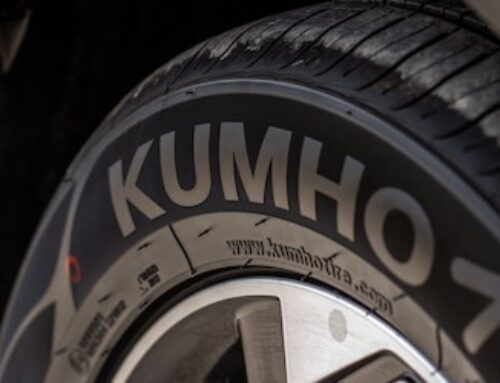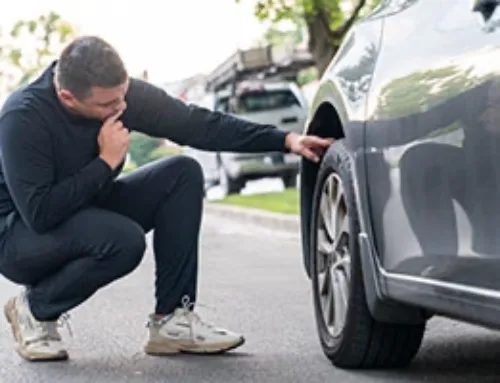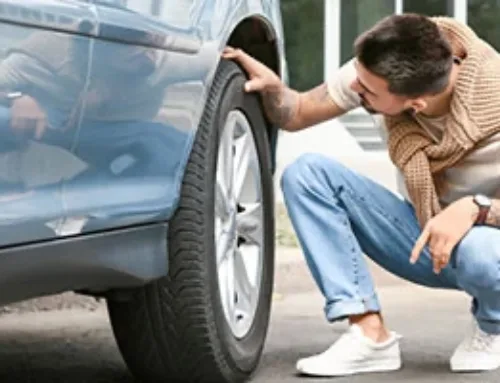Table of Contents
So you’re about to get in your car, but as you look down, you notice an odd bulge sticking out of your tire. This could be a small sidewall hernia, or your tire could have a full-blown tumor. Either way, tire bulging is not something you want to ignore. If left untreated, a tire bulge could result in a tire blowout which can be very dangerous to you as well as other drivers.
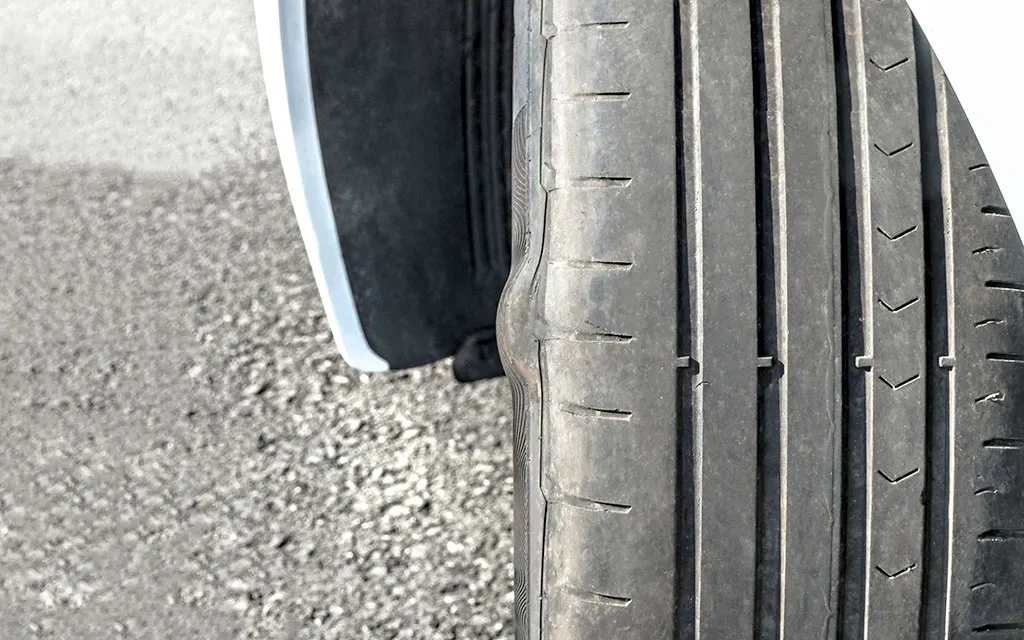
How to spot tire bulges
Most often, a tire bulge will occur on the tire sidewall, which is the area in between where the hubcap ends and the tread begins. Like most things, tire bulges start small but grow if left untreated. When it is small, it will look just like a small deformation in the rubber and might not really be bulging at all. As it grows, it will start to look like a bubble is forming under the “skin” of your tire. People often say it looks as if someone shoved an egg in between the layers.
How do tire bulges form?
Each tire consists of many layers and different materials. The innermost layer, known as the inner liner, is where the air is stored. After the inner liner, there are several layers of fabric known as the body ply. This is to give the tire some stability by reinforcing the shape of the tire. If the inner liner is punctured or damaged, this can cause air to leak into the outer layers causing a bulge. It most often forms on the sidewall because the tread is too strong and rigid to allow for much expansion.
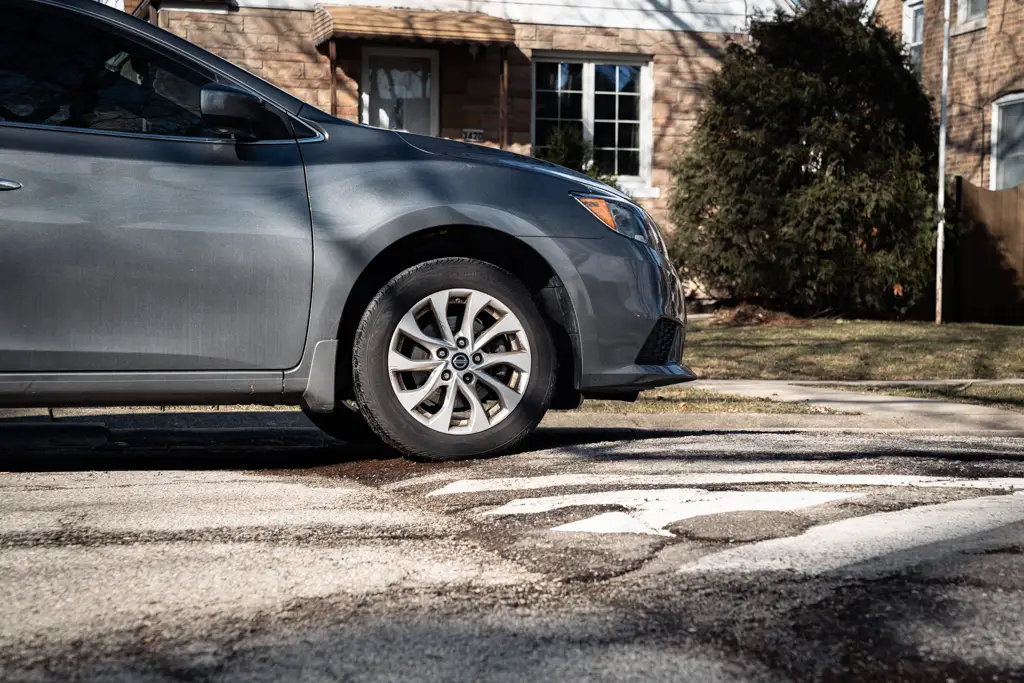
What causes damage to the inner liner?
Typically the inner liner is damaged from a large impact. Things such as:
- Hitting a curb
- Driving over a pothole, especially at high speeds
- Driving over a piece of road debris, such as a rock
- Driving too fast over speed bumps
- Driving on a rough or unpaved road
Do you have a tire bubble but don’t remember hitting anything? Well, it’s also possible that your tire could have a manufacturing defect. If this is the case, your tire might be covered under the tire manufacturer’s warranty.

Is it safe to drive with a tire bulge?
The short answer to this is no. Tire bulges can lead to a tire blowout which can be very dangerous, so if you notice a tire bubble, then it’s best to switch out that tire for a spare tire. Generally speaking, the larger the tire bulge, the more likely it is to pop and cause a blowout.
What to do if you notice a tire bulge?
Unfortunately, once a tire bubble has formed, the tire is beyond repair. Although the puncture to the inner liner could be fixed (this is the same process for fixing flat tires btw), when a bubble appears, that means the tire’s internal structure has become damaged. Once the mesh of the internal body ply has been stretched and damaged, it can not be fixed or replaced. You will have to replace the tire completely, and typically it is best to replace tires as a set of two or four. This is to prevent uneven wear on the tread of your tires.
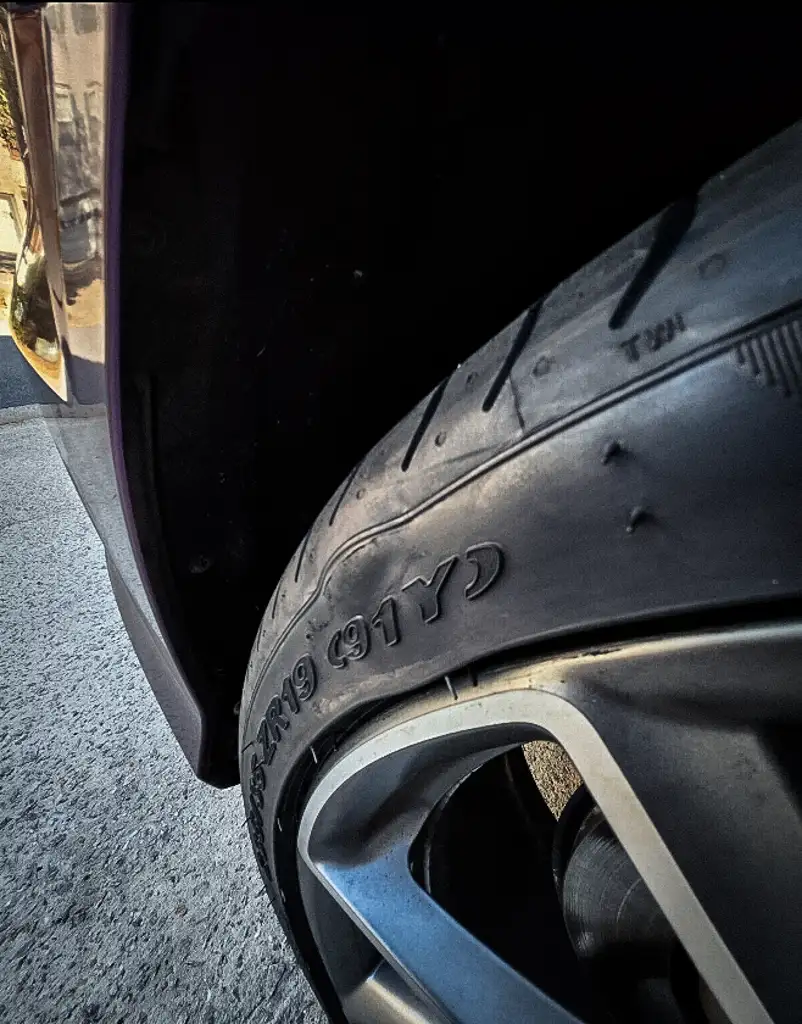
How to prevent tire bulging?
It may not always be possible to prevent tire bubbles. After all, if a tire manufacturer makes a tire with a defect, there is little you can do to prevent that tire from failing over time. However, there are ways to minimize your chances of tire bubbles forming.
If the TPMS sign is on, take action
If you notice your TPMS (Tire Pressure Monitoring System) light come on, don’t ignore it! This means that your car has detected that one or more of your tires aren’t at the appropriate pressure. Luckily, adjusting your tire pressure is easy and can be done by yourself for the cost of a few quarters at most gas stations.
Use a tire gauge to check the air pressure of your tires regularly. Check the owner’s manual to determine the appropriate level of tire pressure. This will ensure that the tires maintain even contact with the road and therefore have even tread wear. Low air pressure, or even worse, driving on a flat tire, is especially bad for the tire’s sidewall and tread.
Drive carefully
Most tire bulging is caused by impact. While driving, be extra careful to avoid hitting curbs, potholes, and driving over road debris. Also, be mindful not to go over speed bumps too fast.
Don’t let the best tire deals & tips roll by!
Sign up for our newsletter

Don’t forget about regular tire maintenance
Make sure that you are taking good care of your tires. Start by regularly inspecting the tread depth of your tires. This can be done easily by sticking a coin into the tread grooves and seeing how far up the tread comes.
If you notice the tread on your tires starting to wear down, it might be a good idea to have your tires rotated. A general rule of thumb is to have your tires rotated once every 5,000 miles. This will help to even out any tread wear that is more pronounced in the front or rear wheels.
In addition to getting your tires rotated, having your wheel alignment checked regularly is a good idea. A tire alignment can help reduce road friction and improve your tires’ life.
Of course, regularly check your tire sidewall for bulges. This can be done visually in just a few seconds per tire. If you see a bulge forming, it is probably already too late to fix, but it could make all the difference in preventing a dangerous blowout several weeks into the future.
Carry a spare tire
This last one won’t prevent a bubble in your tire, but it will give you a safe alternative if you discover one. Along with your spare tire, make sure to keep all necessary tire-changing tools, such as a tire iron and a jack.


